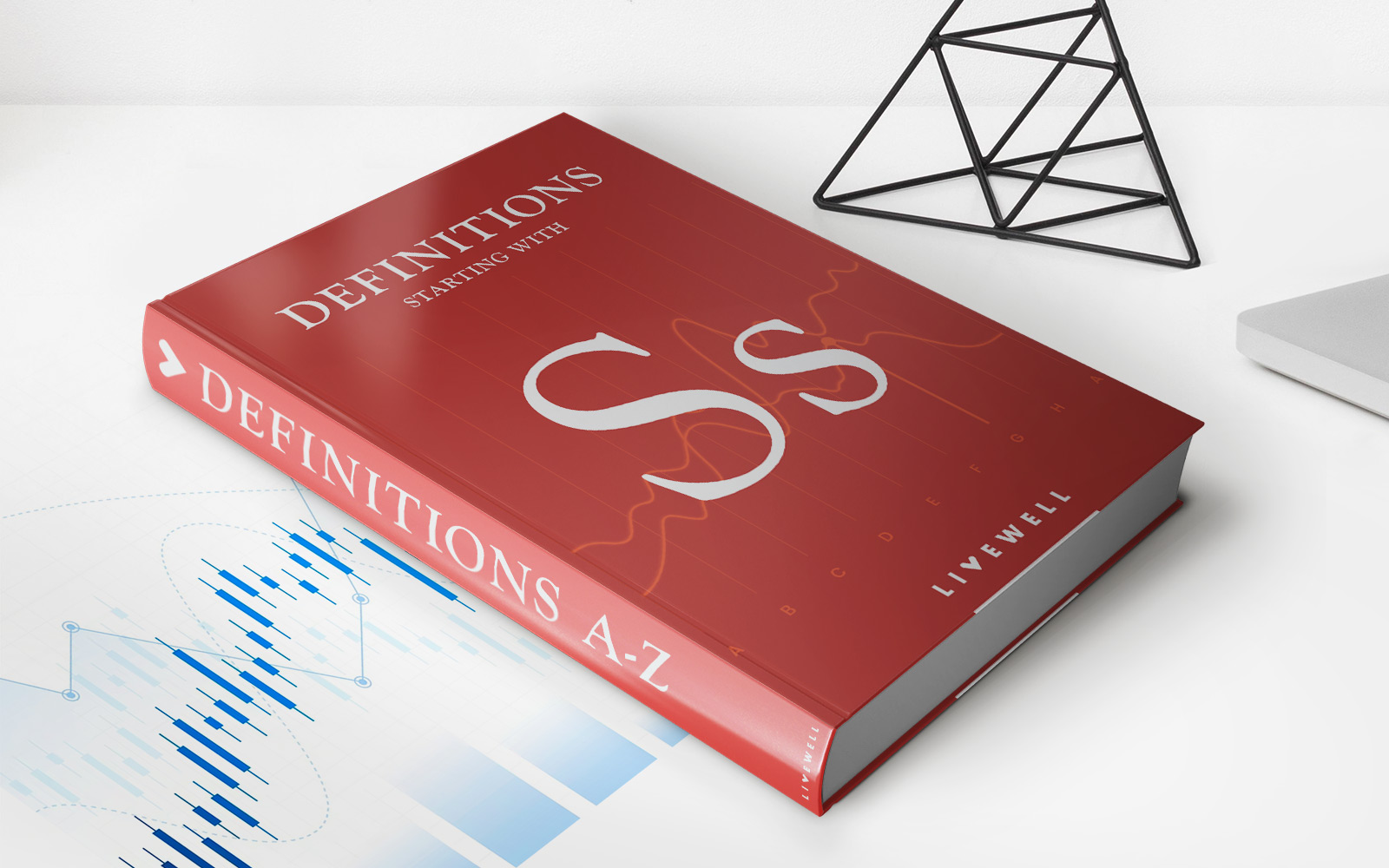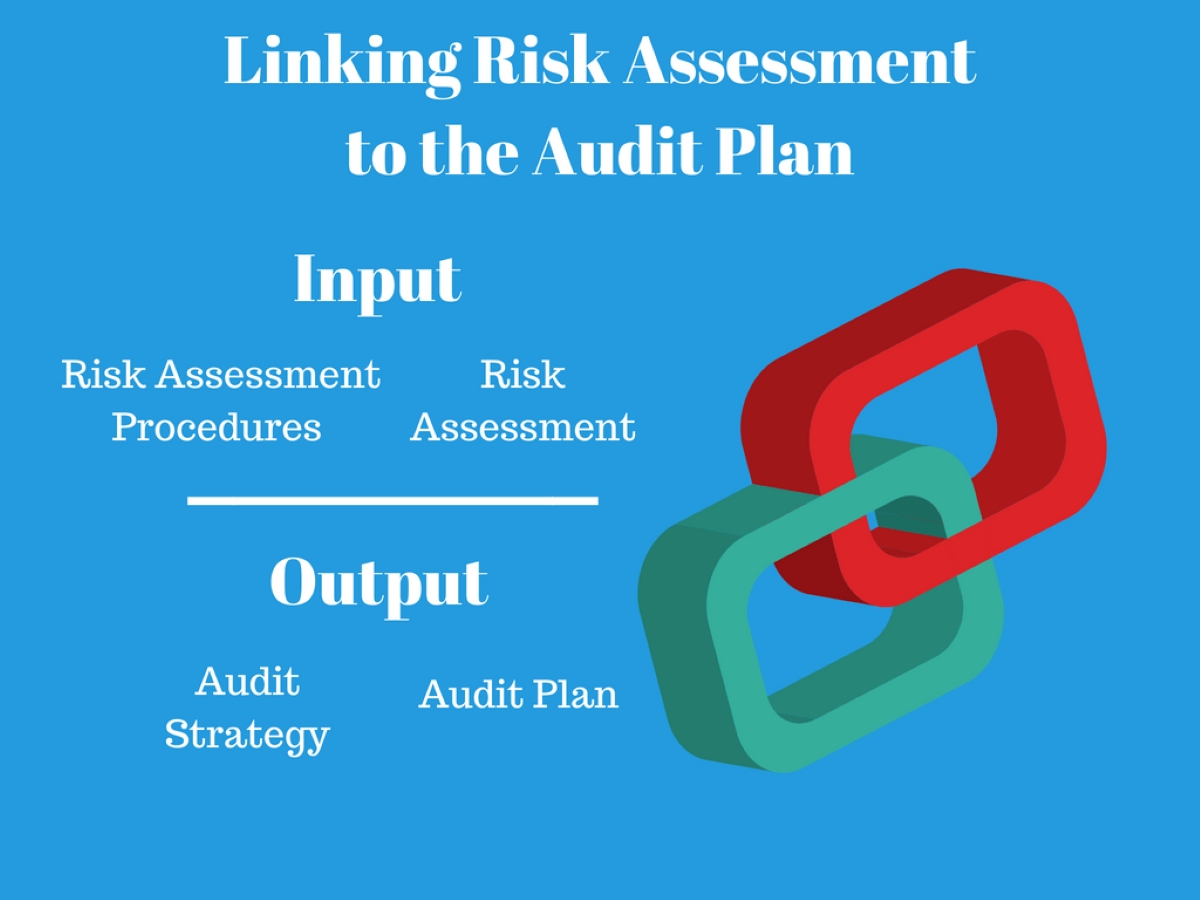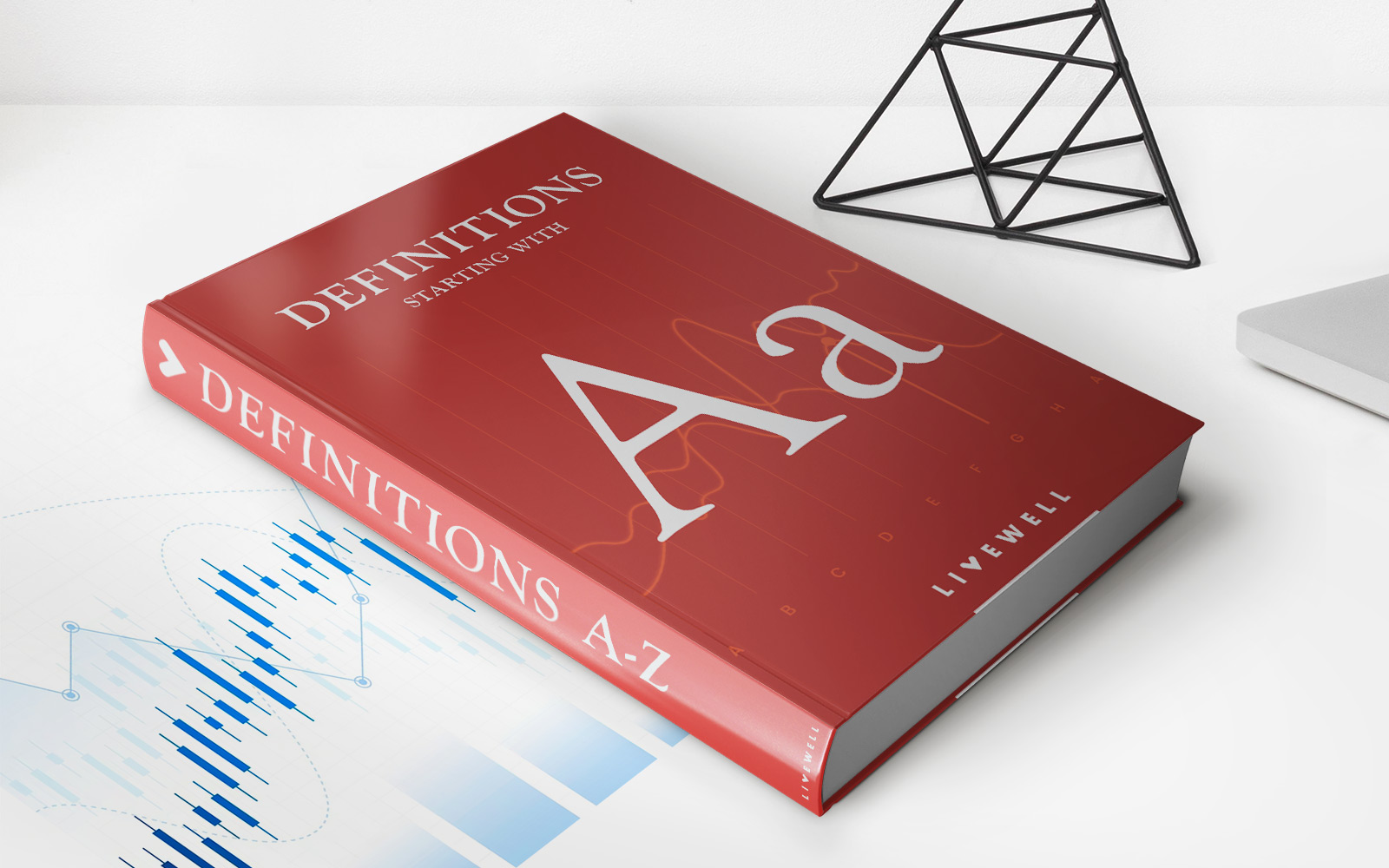

Finance
How Do Student Loans Affect Taxes
Published: January 20, 2024
Learn how student loans impact your taxes and gain valuable insights on navigating the complex world of finance.
(Many of the links in this article redirect to a specific reviewed product. Your purchase of these products through affiliate links helps to generate commission for LiveWell, at no extra cost. Learn more)
Table of Contents
- Introduction
- Deducting Student Loan Interest
- Qualifying for the Student Loan Interest Deduction
- Limitations on Deductible Student Loan Interest
- Claiming the Student Loan Interest Deduction
- Student Loan Forgiveness Programs and Taxes
- Tax Consequences of Student Loan Forgiveness
- Reporting Student Loan Forgiveness on Your Tax Return
- Tax Credits for Education Expenses
- Using the American Opportunity Credit
- Utilizing the Lifetime Learning Credit
- Repayment Plans and Tax Implications
- Income-Driven Repayment Plans
- Taxable Income resulting from Loan Forgiveness on Income-Driven Plans
- Employer Loan Repayment Assistance Programs
- Tax Considerations for Employer Loan Repayment Assistance Programs
- Conclusion
Introduction
Student loans play a significant role in making higher education accessible to millions of students. However, they don’t just impact your financial situation during repayment; they can also affect your taxes. Understanding how student loans influence your tax obligations is crucial for managing your finances effectively.
In this article, we will explore the various ways student loans can impact your taxes and provide you with valuable insights to navigate the complex tax landscape.
Deducing Student Loan Interest
One of the most common tax benefits associated with student loans is the student loan interest deduction. This deduction allows you to subtract up to $2,500 in student loan interest from your taxable income, significantly reducing your overall tax liability.
Qualifying for the Student Loan Interest Deduction
To qualify for the student loan interest deduction, you must meet certain criteria. Firstly, you must be legally obligated to repay the loan, and it must have been taken out solely for educational purposes. Additionally, you must be considered as the taxpayer and not a dependent on someone else’s tax return.
Limitations on Deductible Student Loan Interest
While the student loan interest deduction offers a valuable tax break, it does come with a few limitations. These limitations include income restrictions, phase-out limits, and restrictions on married couples filing separately. It is essential to review these limitations to determine if you qualify for the full deduction.
Claiming the Student Loan Interest Deduction
To claim the student loan interest deduction, you need to fill out Form 1040 or 1040A and attach Schedule 1. Enter the deductible interest amount on line 20 of Schedule 1, and the resulting figure will be subtracted from your total reported income.
Deducting Student Loan Interest
One of the significant tax benefits associated with student loans is the ability to deduct the interest paid on your loans. This deduction can help reduce your taxable income, potentially lowering the amount of taxes you owe.
To qualify for the student loan interest deduction, there are several requirements that must be met:
- The loan must have been used solely for educational expenses.
- You must be legally obligated to repay the loan.
- You must not be claimed as a dependent on someone else’s tax return.
- Your filing status must be single, head of household, qualifying widow/widower with a dependent child, or married filing jointly.
The maximum amount of student loan interest that can be deducted is $2,500 per year. It is important to note that the deduction is an “above-the-line” deduction, meaning you can claim it even if you do not itemize your deductions. This is beneficial for individuals who may not have enough expenses to justify itemizing.
It is also crucial to be aware of the income limitations for claiming the student loan interest deduction. For the tax year 2021, the deduction begins to phase out for single individuals with a modified adjusted gross income (MAGI) of $70,000 and is completely phased out at $85,000. For married couples filing jointly, the phase-out range is a MAGI of $140,000 to $170,000.
When it comes to claiming the deduction, you will need to complete Form 1040 or 1040A and enter the deductible amount on line 20 of Schedule 1. Be sure to keep accurate records of your student loan interest payments, as you may need to provide documentation to support your deduction in case of an audit.
If you paid $600 or more in interest during the tax year, you should receive Form 1098-E from your loan servicer. This form will detail the amount of interest you paid, which you will need to report on your tax return.
Remember that the student loan interest deduction is not available for loans from friends or family members, or if the loan was used for expenses other than qualified education expenses.
Overall, deducting student loan interest can bring significant tax savings for individuals who meet the eligibility criteria. Consult with a tax professional or utilize tax software to ensure you are taking advantage of this valuable deduction while accurately reporting your loan interest on your tax return.
Qualifying for the Student Loan Interest Deduction
To qualify for the student loan interest deduction, there are specific criteria that you must meet. Understanding these requirements will help you determine if you are eligible to claim this tax benefit.
Firstly, you must have taken out the loan solely for qualified educational expenses. This includes tuition, fees, books, supplies, and other necessary expenses directly related to your education. If you used the loan for non-educational purposes, such as personal expenses or paying off credit card debt, you would not qualify for the deduction.
Secondly, you must be legally obligated to repay the loan. This means that the loan must be in your name, and you are responsible for making the payments. If someone else, such as a parent or spouse, took out the loan on your behalf, they would be entitled to the deduction, not you.
Another crucial requirement is that you cannot be claimed as a dependent on someone else’s tax return. The student loan interest deduction is only available to individuals who are considered taxpayers and not dependents. If you meet the definition of a dependent, you will not be eligible for this deduction.
It is also important to note that the student loan interest deduction is available to both undergraduate and graduate students. Unlike other education tax benefits that have restrictions based on your level of education, this deduction applies regardless of the degree or program you are pursuing.
Furthermore, your filing status will also come into play when determining eligibility for the student loan interest deduction. If you are married, you must file either jointly with your spouse to qualify for the deduction. If you are married but choose to file separately, you will not be eligible for the deduction.
Lastly, there are income limitations that can affect your eligibility for the deduction. For the tax year 2021, the phase-out range for single individuals begins at a modified adjusted gross income (MAGI) of $70,000 and is completely phased out at $85,000. For married couples filing jointly, the phase-out range is a MAGI of $140,000 to $170,000.
It is essential to review these criteria and consult with a tax professional or utilize tax software to determine if you meet the qualifications for the student loan interest deduction. By understanding and meeting these requirements, you can take advantage of this valuable tax benefit and potentially reduce your taxable income.
Limitations on Deductible Student Loan Interest
While the student loan interest deduction provides a valuable tax break for borrowers, it does come with some limitations. Understanding these limitations will help you navigate the tax landscape and determine how much of your student loan interest is deductible.
One limitation is the maximum amount of student loan interest that can be deducted. Currently, the maximum deduction allowed is $2,500 per year. This means that even if you paid more than $2,500 in interest on your student loans, you can only deduct up to that amount on your tax return.
Another limitation to consider is the income restrictions for claiming the deduction. For the tax year 2021, the student loan interest deduction begins to phase out for single individuals with a modified adjusted gross income (MAGI) of $70,000. The deduction is completely phased out at a MAGI of $85,000. For married couples filing jointly, the phase-out range is a MAGI of $140,000 to $170,000.
It is important to note that if you are married and filing separately, you will not be eligible for the student loan interest deduction. This restriction applies regardless of your income level.
Additionally, the deduction can only be claimed for the interest paid during the tax year. If you have deferred or skipped any loan payments during the year, you cannot claim the interest on those payments as a deduction until they are actually paid. It is vital to keep track of your loan payments and ensure that you include only the eligible interest amount on your tax return.
If you are claimed as a dependent on someone else’s tax return, you are not eligible to claim the student loan interest deduction. This is an important consideration for students who are still financially dependent on their parents or guardians.
Furthermore, the deduction cannot be claimed for loans from friends or family members. Only loans acquired through qualified lenders, such as banks or the Department of Education, are eligible for the deduction.
Lastly, the student loan interest deduction is considered an “above-the-line” deduction, meaning that you can claim it even if you do not itemize your deductions. This is beneficial for individuals who may not have enough expenses to exceed the standard deduction and still want to take advantage of the deduction.
Understanding these limitations will help you plan your finances effectively and take full advantage of the student loan interest deduction. Consult with a tax professional or utilize tax software to ensure that you meet all the requirements for claiming this deduction and optimize your tax savings.
Claiming the Student Loan Interest Deduction
Claiming the student loan interest deduction on your tax return is a straightforward process, but it’s important to understand the steps involved to ensure you receive the maximum benefit. Here’s a step-by-step guide on how to claim the deduction:
1. Determine your eligibility: Before claiming the student loan interest deduction, make sure you meet all the criteria, including having a qualified student loan, being legally obligated to repay the loan, and not being claimed as a dependent on someone else’s tax return.
2. Gather your documents: You’ll need to collect the necessary documents to support your claim. This includes Form 1098-E, which you should receive from your loan servicer if you paid $600 or more in interest during the tax year. You may also need to provide additional records of your loan payments and interest amounts if you did not receive a Form 1098-E.
3. Complete the required tax forms: To claim the student loan interest deduction, you’ll need to file either Form 1040 or 1040A. Attach Schedule 1 to your tax form, which will include the necessary sections for reporting the deductible interest amount.
4. Find the deduction line: On Schedule 1, you’ll find Line 20, where you’ll report the deductible interest amount. Enter the total amount of student loan interest you paid during the year, up to the maximum allowed deduction of $2,500.
5. Calculate your tax savings: The deduction will reduce your taxable income, which in turn will lower the amount of tax you owe. Keep in mind that the student loan interest deduction is an “above-the-line” deduction, meaning you can claim it regardless of whether you itemize your deductions or take the standard deduction.
6. Submit your tax return: Once you have completed all the necessary forms and calculated your tax savings, file your tax return by the applicable deadline. If you file electronically, the software will guide you through the process and ensure you have accurately claimed the student loan interest deduction.
7. Keep records for future reference: It’s essential to retain copies of all relevant documents, such as the Form 1098-E and proof of payment, in case of an audit. The IRS may request supporting documentation to validate your deduction, so it’s crucial to maintain accurate records.
By following these steps and understanding the process, you can claim the student loan interest deduction confidently and maximize your tax savings. However, keep in mind that tax regulations may change, so consulting with a tax professional or utilizing tax software to ensure accurate reporting is always recommended.
Student Loan Forgiveness Programs and Taxes
Student loan forgiveness programs can offer much-needed relief to borrowers burdened with substantial student debt. However, it is important to understand the tax implications associated with these programs.
When a portion of your student loan balance is forgiven through a forgiveness program, the forgiven amount is typically treated as taxable income by the Internal Revenue Service (IRS). This means that you may be required to report the forgiven amount as income on your tax return.
It’s important to note that not all student loan forgiveness programs result in taxable income. The IRS provides certain exceptions where forgiveness is not considered taxable. These exceptions typically apply to specific types of forgiveness programs, such as Public Service Loan Forgiveness (PSLF) or forgiveness through an income-driven repayment plan.
If you qualify for forgiveness under the PSLF program, the forgiven amount after making 120 qualifying payments will not be considered taxable income. This makes the PSLF program especially beneficial, as borrowers can potentially have a significant amount of debt forgiven without incurring a hefty tax burden.
Forgiveness through an income-driven repayment plan, such as Income-Driven Repayment (IDR), also falls under the exception where the forgiven amount is not taxable. Under an IDR plan, borrowers make payments based on their income and family size for a specific period, typically 20 or 25 years. After this period, any remaining loan balance is forgiven, and the forgiven amount is not subject to income tax.
On the other hand, forgiveness through other types of programs, such as loan forgiveness for teachers, healthcare professionals, or specific occupations, may be considered taxable income. These forgiven amounts will be reported to you on Form 1099-C, Cancellation of Debt, and you will need to include them as income on your tax return.
It’s crucial to understand the potential tax consequences of student loan forgiveness before enrolling in any forgiveness programs. While forgiveness can provide relief from your student loan debt, it’s essential to plan for the potential tax liability that may arise from the forgiven amount.
If you’re uncertain about the tax implications of student loan forgiveness, it’s advisable to consult with a tax professional who can provide guidance specific to your situation. They can help you understand the tax consequences and assist in preparing and reporting the forgiven amount accurately on your tax return.
By staying informed about the tax implications and planning ahead, you can make informed decisions regarding your participation in student loan forgiveness programs while effectively managing your tax obligations.
Tax Consequences of Student Loan Forgiveness
When your student loan balance is forgiven through a student loan forgiveness program, it’s important to understand the potential tax consequences. In most cases, the forgiven amount is treated as taxable income by the IRS, which means you may be required to report and pay taxes on the forgiven amount.
While student loan forgiveness can provide significant relief from your debt burden, it’s crucial to consider the potential tax liability that accompanies it. The tax consequences of student loan forgiveness can vary depending on the type of forgiveness program and the specific circumstances of your loan.
If you receive forgiveness through programs like Public Service Loan Forgiveness (PSLF) or forgiveness through an income-driven repayment plan, the forgiven amount is generally not considered taxable income. This is a significant benefit, as it allows borrowers to have a substantial portion of their debt forgiven without incurring additional tax liability.
However, it’s important to note that forgiveness through certain other programs, such as state-specific loan forgiveness programs or forgiveness for specific occupations, may be subject to income tax. The forgiven amount is typically reported to you and the IRS on Form 1099-C, Cancellation of Debt. You will need to include this amount as taxable income on your tax return for the year in which the debt was forgiven.
It’s crucial to be prepared for the potential tax liability that may arise from student loan forgiveness. Failure to include the forgiven amount as income on your tax return can result in penalties and interest from the IRS. Additionally, having a large amount of taxable income in a single tax year may push you into a higher tax bracket, potentially increasing your overall tax liability.
Planning ahead for the tax consequences of student loan forgiveness is essential. Consider consulting with a tax professional who can guide you through the process and help you understand the potential tax implications based on your specific situation. They can assist in accurately reporting the forgiven amount and help you determine any available deductions or credits that can help offset the tax liability.
It’s important to factor in the potential tax consequences when evaluating different student loan forgiveness options. While forgiveness offers relief from your student debt, it’s crucial to consider the long-term impact on your taxes. By understanding the tax consequences and planning accordingly, you can effectively manage your student loan debt and minimize any unexpected tax liabilities.
Reporting Student Loan Forgiveness on Your Tax Return
When you receive student loan forgiveness, it’s important to accurately report the forgiven amount on your tax return to ensure compliance with IRS regulations. Here are the key steps to report student loan forgiveness on your tax return:
1. Obtain Form 1099-C: If your student loan forgiveness results in taxable income, the lender or loan servicer will send you Form 1099-C, Cancellation of Debt. This form reports the amount of debt that was forgiven and provides important information for tax reporting purposes.
2. Review Box 2 on Form 1099-C: Box 2 of Form 1099-C indicates the amount of debt that was forgiven. Ensure that this amount is accurate and matches your records of the forgiven amount.
3. Report the forgiven amount on your tax return: To report the forgiven amount, you will need to complete Form 1040 or 1040A. On the appropriate line, typically Line 21 of Form 1040, you will enter the forgiven amount as “Other Income.” This will include the forgiven amount in your total taxable income for the tax year.
4. Provide an explanation: If you receive a Form 1099-C but believe you qualify for an exception or exclusion from including the forgiven amount as income, you may need to provide an explanation with your tax return. Attach a statement or use Form 982, Reduction of Tax Attributes Due to Discharge of Indebtedness, to provide details of why the forgiven amount should not be taxable.
5. File your tax return: Once you have accurately reported the forgiven amount, file your tax return by the applicable deadline. Ensure that all information is entered correctly to avoid any penalties or potential audits.
6. Keep records and documentation: It’s essential to keep a copy of Form 1099-C and any supporting documentation related to the forgiveness of your student loan. This includes records of communications with the lender or loan servicer, payment history, and any documents that explain the basis for your claim of exclusion or exception from taxable income.
7. Consult with a tax professional: Student loan forgiveness and its tax implications can be complex. Consulting with a tax professional can provide guidance specific to your situation and help ensure accurate reporting on your tax return.
By following these steps and reporting the forgiven amount correctly on your tax return, you can fulfill your tax obligations and avoid potential issues with the IRS. It’s important to understand the tax implications of student loan forgiveness and seek professional advice when needed to ensure compliance with tax regulations.
Tax Credits for Education Expenses
When it comes to education-related expenses, there are tax credits available that can help reduce the overall tax burden for eligible individuals and families. These tax credits can provide valuable financial assistance when it comes to funding education. Here are two commonly used tax credits for education expenses:
1. American Opportunity Credit:
The American Opportunity Credit (AOC) is a tax credit that provides financial relief for qualified higher education expenses. It is available for the first four years of post-secondary education. Eligible expenses include tuition, fees, and course materials required for enrollment, such as books. The AOC offers a maximum credit of $2,500 per student, with 40% of the credit being partially refundable, meaning you may receive a refund even if you don’t owe any taxes.
To claim the AOC, you must meet certain eligibility criteria, including being enrolled at least half-time in a degree or certificate program, not having a felony drug conviction, and meeting income requirements. The credit phases out for higher-income taxpayers.
2. Lifetime Learning Credit:
The Lifetime Learning Credit (LLC) is another tax credit that provides assistance for education expenses. Unlike the AOC, the LLC is not limited to the first four years of education and can be used for both undergraduate and graduate studies. Eligible expenses for the LLC include tuition and fees required for enrollment in eligible educational institutions.
The LLC offers a maximum credit of $2,000 per tax return. However, unlike the AOC, the LLC is non-refundable, which means it can only reduce your tax liability. The LLC also has the same income phase-out threshold as the AOC.
To claim these tax credits, you will need to complete Form 8863, Education Credits, and include it with your tax return. Provide accurate information about your education expenses and any other required documentation or supporting records.
It’s important to note that you cannot claim both the AOC and the LLC for the same student in the same tax year. You should evaluate your eligibility for each credit and determine which one provides the maximum benefit for your specific situation.
Consult with a tax professional or utilize tax software to ensure that you meet the requirements for claiming these education tax credits accurately. Taking advantage of these tax credits can significantly reduce the financial burden of education expenses, making it more affordable for you or your dependent to pursue higher education.
Using the American Opportunity Credit
The American Opportunity Credit (AOC) is a tax credit designed to provide financial assistance for eligible higher education expenses. Understanding how to effectively use this credit can help reduce your tax burden and make pursuing higher education more affordable. Here’s how to utilize the American Opportunity Credit:
1. Determine your eligibility: Before claiming the AOC, ensure that you meet the eligibility criteria. You must be enrolled at least half-time in a degree or certificate program, be pursuing a qualified educational credential, and not have a felony drug conviction. Additionally, your modified adjusted gross income (MAGI) must fall within the income limits set by the IRS.
2. Gather documentation: Collect all necessary documentation to support your claim for the AOC. This may include Form 1098-T, Tuition Statement, which you should receive from your educational institution. This form reports the qualified educational expenses you paid during the tax year.
3. Calculate your eligible expenses: Determine the amount of qualified educational expenses you paid during the tax year. This includes tuition, fees, and required course materials, such as books, supplies, and equipment. Note that room and board expenses, transportation costs, and medical expenses are not eligible for the AOC.
4. Determine your credit amount: The AOC allows a maximum credit of $2,500 per student per year. Forty percent of the credit, up to $1,000, is refundable, meaning you may receive a refund even if you don’t owe any taxes. Calculate your credit based on your eligible expenses, and remember that the credit cannot exceed your tax liability.
5. Complete Form 8863: To claim the AOC, you will need to complete Form 8863, Education Credits, and include it with your tax return. Provide accurate information about your qualified expenses and any other required details. Double-check your calculations and ensure that all information is entered correctly.
6. Claim the credit on your tax return: Include the calculated credit amount on the appropriate line of your tax return. Depending on your filing status and other tax credits or deductions, the AOC may directly reduce your tax liability or provide you with a refund if the refundable portion applies.
7. Keep records and documentation: It’s crucial to retain copies of all forms and supporting documentation related to the AOC, including Form 8863, Form 1098-T, and receipts for qualified expenses. These records may be necessary in case of an IRS audit or to resolve any issues that may arise in the future.
Understanding how to utilize the American Opportunity Credit can provide significant financial relief for higher education expenses. By carefully following the eligibility criteria and accurately reporting your qualified expenses, you can maximize the benefit of this tax credit and make your educational journey more affordable.
Utilizing the Lifetime Learning Credit
The Lifetime Learning Credit (LLC) is a tax credit that offers financial assistance for individuals pursuing higher education. Understanding how to effectively utilize this credit can help reduce your tax liability and make continuing education more affordable. Here’s how to maximize the benefits of the Lifetime Learning Credit:
1. Confirm your eligibility: Before claiming the LLC, ensure that you meet the eligibility criteria. Unlike the American Opportunity Credit, the LLC is not limited to the first four years of post-secondary education. It can be used for undergraduate, graduate, and professional degree courses or courses taken to acquire or improve job skills. There are no enrollment status or degree program requirements.
2. Gather necessary documentation: Collect all relevant documents to support your claim for the LLC. Institutions typically send Form 1098-T, Tuition Statement, which provides information about qualified educational expenses. Ensure that you have records of the expenses you paid during the tax year.
3. Calculate your eligible expenses: Determine the total amount of qualified educational expenses for the tax year. This includes tuition, fees, and other required course materials. Take note that expenses such as room and board, transportation, and medical costs are not eligible for the LLC.
4. Determine your credit amount: The maximum LLC credit is $2,000 per tax return. Unlike the American Opportunity Credit, the LLC is non-refundable, meaning it can only reduce your tax liability. Calculate your eligible credit amount based on your qualified expenses, but remember that the LLC cannot exceed your tax liability.
5. Complete Form 8863: To claim the LLC, complete Form 8863, Education Credits, and attach it to your tax return. Enter accurate information about your qualified expenses and any other required details. Verify your calculations to ensure accuracy.
6. Claim the credit on your tax return: Include the calculated LLC credit amount on the appropriate line of your tax return. The credit will directly reduce your tax liability, helping to lower the amount you owe to the IRS. Be sure to review the instructions for your specific tax form to accurately claim the credit.
7. Maintain records and documentation: Keep copies of Form 8863, Form 1098-T, and all supporting documentation related to the LLC. This includes receipts and records of your eligible educational expenses. These documents may be necessary for future reference or in the event of an IRS audit.
By understanding the criteria and following the steps to claim the Lifetime Learning Credit, you can receive financial assistance for your educational expenses while reducing your overall tax liability. Consult with a tax professional or utilize tax software to ensure accurate reporting and maximize the benefits of this valuable tax credit.
Repayment Plans and Tax Implications
Choosing the right repayment plan for your student loans is crucial for managing your debt effectively. It’s important to understand the tax implications that may arise from different repayment plans. Here is an overview of the tax implications associated with repayment plans:
1. Income-Driven Repayment Plans:
Income-Driven Repayment (IDR) plans, such as Income-Based Repayment (IBR), Pay As You Earn (PAYE), and Revised Pay As You Earn (REPAYE), base your monthly student loan payments on your income and family size. Under these plans, your monthly payments may be capped at a percentage of your discretionary income.
Taxable Income resulting from Loan Forgiveness on Income-Driven Plans:
One significant tax implication of income-driven repayment plans is the potential for loan forgiveness after a certain period of repayment. If you qualify for loan forgiveness after making a set number of payments, any forgiven balance may be considered taxable income by the IRS. This means that you could owe taxes on the forgiven amount in the year it is forgiven.
It’s important to plan and budget for the potential tax liability associated with loan forgiveness under income-driven plans. Calculate an estimate of the potential tax liability and consider setting aside funds to cover the tax obligations when the forgiveness occurs.
2. Employer Loan Repayment Assistance Programs:
Some employers offer loan repayment assistance programs to help employees pay off their student loans. These programs may provide financial contributions towards your loan payments, which can be a valuable employee benefit.
Tax Considerations for Employer Loan Repayment Assistance Programs:
Under current tax laws, employer loan repayment assistance programs may be considered taxable income. The contributions made by your employer towards your loan payments will be included as income on your W-2 form. This means that you may owe taxes on the loan assistance amount.
It is crucial to understand and consider the tax implications of employer loan repayment assistance programs when evaluating such benefits. It’s recommended to consult with a tax professional to assess the impact on your taxes and plan accordingly.
Understanding the tax implications of different student loan repayment plans is essential for setting realistic expectations and managing your financial obligations effectively. Take the time to research and evaluate the specific tax implications of your chosen repayment plan, and consider consulting with a tax professional for personalized guidance. By being proactive and informed, you can successfully navigate the tax landscape while managing your student loan repayment.
Income-Driven Repayment Plans
Income-Driven Repayment (IDR) plans are designed to provide borrowers with more affordable monthly payments based on their income and family size. These plans offer flexibility and can help borrowers manage their student loan debt by ensuring that payments are tailored to their financial circumstances. Here’s an overview of income-driven repayment plans and their benefits:
1. Income-Based Repayment (IBR):
Income-Based Repayment (IBR) is one of the most widely used income-driven repayment plans. Under IBR, your monthly student loan payments are capped at a percentage of your discretionary income. For new borrowers as of July 1, 2014, the monthly payment amount is limited to 10% or 15% of your discretionary income, depending on when you took out your loans. After 20 or 25 years of qualifying payments, any remaining student loan balance may be eligible for forgiveness.
2. Pay As You Earn (PAYE):
Pay As You Earn (PAYE) is another income-driven repayment plan available to borrowers. It limits your monthly payments to 10% of your discretionary income, based on a formula that takes into account your income and family size. To qualify for PAYE, you must be a new borrower as of Oct. 1, 2007, and have received a disbursement of a Direct Loan after Oct. 1, 2011. Similar to IBR, any remaining balance may be eligible for forgiveness after 20 years of qualifying payments.
3. Revised Pay As You Earn (REPAYE):
Revised Pay As You Earn (REPAYE) is an income-driven repayment plan available to Direct Loan borrowers regardless of when they took out their loans. PAYE uses a repayment formula similar to PAYE, capping monthly payments at 10% of discretionary income. However, REPAYE does not have specific forgiveness timelines; instead, forgiveness generally occurs after 20 or 25 years of qualifying payments, depending on whether the loans were for undergraduate or graduate studies.
Benefits of Income-Driven Repayment Plans:
– Lower Monthly Payments: One of the key advantages of income-driven repayment plans is that they can reduce your monthly student loan payments to a more manageable level based on your income. This can provide much-needed financial relief, especially for borrowers facing economic hardship.
– Forgiveness Opportunities: Depending on the repayment plan, income-driven plans offer the potential for loan forgiveness after a certain period of qualifying payments. This can be particularly beneficial for borrowers who have substantial remaining balances after making consistent payments over time.
– Flexible Repayment Terms: Income-driven repayment plans allow for flexibility in adjusting the monthly payment amount based on changes in income or family size. This can be helpful during periods of financial uncertainty or transition.
It’s important to note that while income-driven repayment plans can lower your monthly payments, they may extend the repayment term, which can result in paying more interest over time. Additionally, any forgiven amount at the end of the repayment period may be considered taxable income, so it’s essential to plan for potential tax implications.
Before selecting an income-driven repayment plan, it’s recommended to evaluate your individual circumstances, consider your long-term financial goals, and use repayment calculators or consult with a student loan counselor to determine which plan best suits your needs.
Taxable Income resulting from Loan Forgiveness on Income-Driven Plans
Loan forgiveness can provide significant relief for borrowers enrolled in income-driven repayment plans. However, it’s important to understand the potential tax implications associated with the forgiven amount. In most cases, the forgiven balance on income-driven repayment plans is considered taxable income by the IRS.
When a portion of your student loan balance is forgiven after making qualifying payments under an income-driven repayment plan, the forgiven amount is typically included in your taxable income for that year. This means you may be required to pay taxes on the forgiven amount, increasing your overall tax liability.
It’s important to plan and budget for the potential tax liability associated with loan forgiveness under income-driven plans. Being aware of the potential tax consequences can help you avoid any unexpected financial burdens when the forgiveness occurs.
Keep in mind that the taxable income resulting from loan forgiveness on income-driven plans is calculated based on the forgiven amount in the year it is forgiven. This can be a significant amount, especially for borrowers with substantial loan balances or those who have made payments under the plan for an extended period.
To prepare for the tax liability resulting from loan forgiveness, consider the following:
1. Calculate the potential tax liability: Estimate the amount of potential taxable income resulting from the forgiven amount. You can use online calculators or consult with a tax professional to get an accurate estimate.
2. Set aside funds: Plan ahead and set aside funds to cover the anticipated tax liability. This can help ensure that you’re prepared to pay the taxes owed when the forgiveness occurs.
3. Adjust your financial planning: Incorporate the potential tax liability into your long-term financial planning. Consider how the taxable income may affect your overall financial goals, such as retirement planning or saving for major life events.
4. Consult with a tax professional: It’s wise to consult with a tax professional who can guide you through the complexities of tax rules and provide personalized advice based on your unique financial situation.
It’s important to note that certain exceptions may apply where loan forgiveness is not considered taxable income. For example, if you qualify for loan forgiveness through the Public Service Loan Forgiveness (PSLF) program or forgiveness due to a permanent disability, the forgiven amount is typically not taxable.
Understanding the potential tax consequences of loan forgiveness on income-driven repayment plans is crucial for proper financial planning. By preparing for the potential tax liability, you can effectively manage the financial implications of loan forgiveness and make informed decisions about your student loan repayment strategy.
Employer Loan Repayment Assistance Programs
Employer loan repayment assistance programs have gained popularity as a valuable employee benefit, especially in a competitive job market. These programs are designed to help employees manage their student loan debt by providing financial assistance towards loan payments. Here’s an overview of employer loan repayment assistance programs:
1. How it works:
Employer loan repayment assistance programs vary in structure, but they typically involve the employer making contributions towards the employee’s student loan payments. The assistance can be in the form of a fixed monthly payment or a lump-sum annual contribution. Employers may offer this benefit as an incentive to attract and retain top talent.
2. Tax considerations:
Tax Considerations for Employer Loan Repayment Assistance Programs: The IRS treats the contributions made by employers towards employee loan payments as taxable income. The employer includes the loan assistance amount in the employee’s W-2, and the employee is required to pay taxes on that amount. It’s important for employees to understand the potential tax implications and plan accordingly to cover the tax liability resulting from the additional income.
3. Eligibility and program terms:
Each employer’s loan repayment assistance program may have its own eligibility criteria and program terms. Typically, employees need to meet certain requirements, such as minimum tenure with the company, specified work hours, or meeting performance benchmarks. Employers may also place a cap on the amount of assistance provided per employee or set limits on the total reimbursement amount over a specific period.
4. Considerations for employees:
Employees should carefully consider the value of an employer loan repayment assistance program when evaluating job offers or deciding whether to participate in the program. Factors to consider include the amount of assistance provided, the length of the program, and the terms and conditions for eligibility. It’s important to assess the potential tax implications and determine if the benefits outweigh the tax liability resulting from the additional income.
5. Long-term financial impact:
Participating in an employer loan repayment assistance program can have significant benefits in reducing student loan debt. It can also free up additional funds that would have otherwise been allocated to loan payments. Employees can use these funds to invest in their financial future, such as saving for retirement, building an emergency fund, or pursuing other financial goals.
6. Professional tax advice:
Considering the potential tax implications of employer loan repayment assistance programs, employees should seek professional tax advice to better understand their specific tax situation. A tax professional can provide personalized guidance based on individual circumstances and help determine the most tax-efficient approach to managing the additional income resulting from the assistance program.
Employer loan repayment assistance programs can provide significant relief for employees burdened with student loan debt. By understanding the tax considerations, eligibility criteria, and long-term financial impact, employees can make informed decisions about participating in these programs and effectively manage their student loan obligations.
Tax Considerations for Employer Loan Repayment Assistance Programs
Employer loan repayment assistance programs can provide valuable support for employees managing student loan debt. It’s important to understand the tax considerations associated with these programs to accurately assess their true financial impact. Here are key tax considerations for employer loan repayment assistance programs:
1. Taxable income:
Contributions made by employers towards employee loan payments are generally considered taxable income. The amount of assistance provided is included in the employee’s W-2, increasing their overall taxable income for the year. It’s crucial for employees to be aware of the potential tax liability resulting from the additional income and plan accordingly.
2. Income tax implications:
As the additional income from employer loan repayment assistance is taxable, employees will owe income tax on the amount of assistance received. The actual tax liability will depend on the employee’s individual tax bracket and other personal factors. It’s important to consult with a tax professional or use tax software to estimate the tax impact accurately.
3. Potential estimated taxes:
Employer loan repayment assistance is typically subject to federal income tax, state income tax (where applicable), and FICA taxes, including Social Security and Medicare. Employees may need to increase their estimated tax payments or adjust their withholding to avoid underpayment penalties at tax time.
4. Timing of tax payments:
Employees should be prepared to pay income taxes on the additional income from employer loan repayment assistance during the tax year in which it is received. It’s advisable to plan for the tax liability and set aside funds to cover the taxes owed to avoid any financial strain when tax payments are due.
5. Potential deductions and credits:
While the additional income is taxable, employees may be eligible for certain deductions and credits that can help reduce their overall tax liability. For example, individuals who qualify may be able to claim student loan interest deductions or education-related tax credits on their tax returns.
6. Professional tax advice:
Given the complex nature of taxes and the individual circumstances of employees, seeking professional tax advice is highly recommended. A tax professional can provide personalized guidance, help calculate estimated tax payments, identify potential deductions or credits, and ensure accurate compliance with tax regulations.
Considering the tax implications of employer loan repayment assistance programs is crucial for employees to effectively manage their tax obligations. By understanding the potential tax liability, planning for estimated tax payments, and seeking professional advice, employees can make informed decisions about participating in these programs while minimizing any unexpected tax burdens.
Conclusion
Understanding the tax implications and considerations related to student loans is essential for borrowers looking to navigate the complex landscape of finance and taxation. Student loans can have a significant impact on an individual’s financial situation, and being aware of how they affect taxes can lead to better financial planning and decision-making.
From deducting student loan interest to navigating the tax consequences of loan forgiveness, it’s crucial to stay informed about the available tax benefits and potential tax liabilities associated with student loans. The student loan interest deduction can provide valuable tax savings, but it is important to understand the limitations and eligibility criteria.
Loan forgiveness programs offer relief to borrowers, but it’s crucial to plan for the potential tax liability resulting from the forgiven amount. Reporting student loan forgiveness accurately on tax returns is important to ensure compliance with IRS regulations.
Moreover, tax credits for education expenses, such as the American Opportunity Credit and the Lifetime Learning Credit, can help offset the financial burden of educational costs. Understanding how to effectively utilize these credits can provide significant financial relief for eligible individuals.
For borrowers enrolled in income-driven repayment plans, it’s important to consider the potential tax consequences of loan forgiveness. Taxable income resulting from loan forgiveness on income-driven plans can lead to unexpected tax liabilities if not properly planned for in advance.
Employer loan repayment assistance programs can be valuable benefits for employees, but considering the tax considerations is crucial. Being aware of the potential tax implications and planning for the additional taxable income is essential to minimize any surprises come tax time.
In conclusion, by understanding the tax-related aspects of student loans, borrowers can make informed decisions, effectively manage their finances, and optimize their tax benefits. It is highly recommended to consult with a tax professional or utilize tax software to ensure accurate reporting and adherence to tax regulations. By staying knowledgeable and proactive, borrowers can navigate the tax implications of student loans with confidence and create a solid financial foundation.














